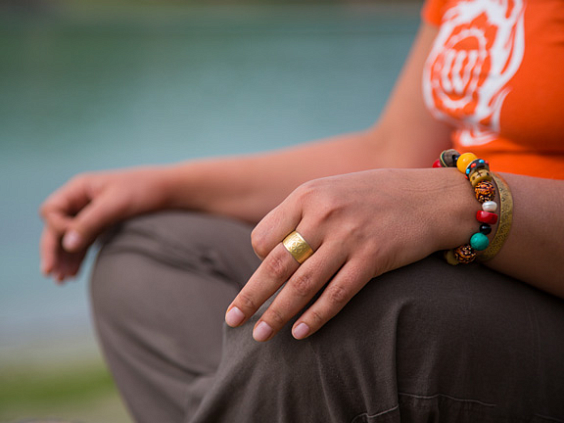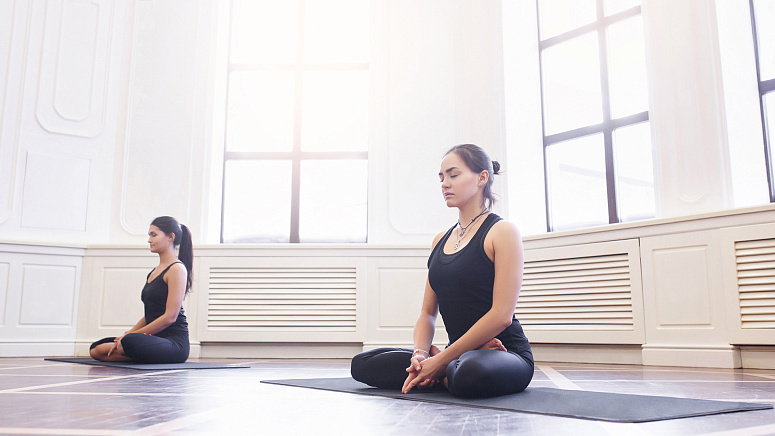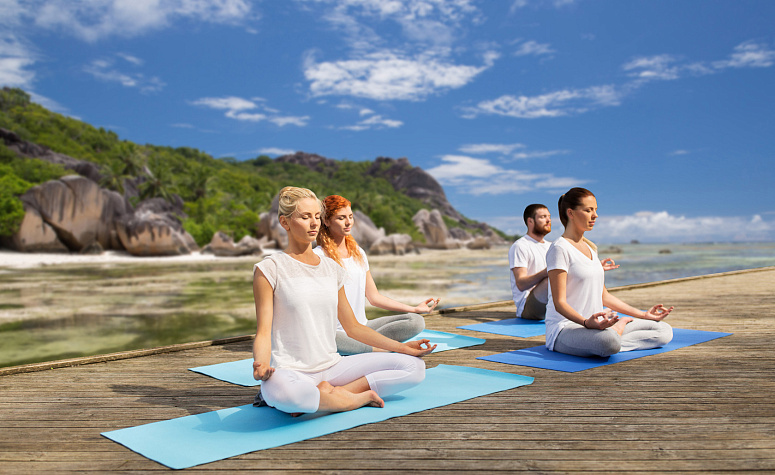Yoga serves as a transformative practice, guiding individuals to quiet the mind, uncover their innermost nature, achieve sensory equilibrium, and live in harmony with their environment. Beyond its philosophical teachings, yoga equips practitioners with techniques to align the physical and spiritual dimensions, seamlessly integrating them into daily life. One such technique is the use of mudras. What are mudras, and which forms are most widely embraced? This article will illuminate the purpose and practice of mudras, offering insight into their profound role in yoga.
Definition of mudras
Traditionally, a mudra is defined as a deliberate arrangement of fingers and hands in relation to the body.
The term "mudra" originates from Sanskrit and is commonly translated as "seal" or "lock”, symbolizing something that binds or secures. However, there is a deeper, more poetic interpretation of the word: the root "mud" conveys "joy" or "happiness," while "ra" means "to emit" or "to radiate light." In this sense, a mudra can be seen as a practice that helps one emanate happiness, love, and well-being. This dual interpretation underscores the essence of mudras—not only as techniques to direct and contain energy but also as gestures that nurture and express inner joy, positivity, and spiritual light.
How can a seemingly simple gesture evoke joy and a feeling of lightness?
According to Ayurveda, the palms and soles of the feet contain projections and intersection points of subtle energy channels known as marmas, which are associated with internal organs and specific parts of the body. Each finger is believed to carry a unique energetic quality. By connecting the fingers to the palm or to one another, it is possible to stimulate particular areas of the body and interact with one's energetic field. Some even believe that hand gestures, or mudras, can be used to treat illnesses and restore balance to the body. This practice highlights the profound connection between the physical and energetic dimensions, offering a holistic approach to healing and well-being.
On a subtler level, energy flows pass in and out of the body through these marmas. It is believed that a sequence of intentional hand gestures aligns the practitioner with the cosmic energy flow. This is why the practice of mudras can be traced back to the era of the Yajur Veda, where specific hand positions were used during sacred rituals. The Brahmins who performed these rituals worked with consciousness to inspire spiritual elevation, directing their focus toward the ritual's purpose. By arranging their fingers to represent primordial elements, deities, and their attributes, they aimed to invoke these divine energies into the material world.
The human body operates as a finely tuned energetic system, continuously resonating with the Universe. When a person directs their focus toward an object, they set their internal energy in motion, creating a connection with both the object and their surroundings at the level of subtle vibrations.
A single mudra is thought to hold multiple layers of meaning and can be interpreted in diverse ways. As a result, when practicing mudras, it is crucial to take into account various elements: the arrangement of the fingers, the focus of the gaze, the alignment of the body, facial expressions, and the pattern of breath. By adjusting any of these aspects, one can achieve different effects tailored to their specific intentions.
Today, mudras are most commonly used in yoga and meditation practices. By positioning the fingers in specific ways, practitioners stimulate nerve endings, engaging various parts of the brain. This can lead to relaxation, improved focus, or even energizing the body for action.
This practice establishes a distinct energetic circuit, creating a delicate channel through which spiritual energy circulates, guiding the practitioner toward a particular mental state. Ultimately, the practitioner attains a state of yoga—a profound union of mind, body, and spirit.
The movement of energy also carries a cleansing quality. As it flows, it reinforces the neural pathways connecting the brain and organs, improving regulation over the body, illness, and the aging process. Each primordial element influences specific aspects of the body. By either activating or soothing these elements, one can harmonize the doshas (the body's energies), fostering health and overall well-being.
Interestingly, mudras play a central role in Indian classical dance. Through intricate gestures and graceful movements, dancers convey emotions, human experiences, and even the essence of objects. In India, cultural training frequently encompasses the study of non-verbal communication, including body postures, finger arrangements, and symbolic gestures.
Varieties of mudras
There are more than 150 documented mudras, but it’s recommended to begin with just one and practice it regularly—ideally three times daily for a month. This consistent practice helps establish a strong habit and fosters the creation of new neural pathways. Over time, the mind’s distractions diminish, and the mudra’s potency becomes more evident, enabling the practitioner to deeply experience its transformative effects.
Here are a few essential mudras to explore and incorporate into your practice:
- Jnana mudra (mudra of knowledge). Symbolically, the index finger signifies individual consciousness, while the thumb represents universal consciousness. Bringing them together dissolves the ego, uniting the self with higher awareness.
- Practicing this mudra boosts memory, sharpens focus, and enhances blood flow.
- It enhances the body's overall energy levels and vitality.
- It stimulates the Sahasrara Chakra, opening the pathway to an endless stream of wisdom and insight.
- Nabhi mudra (tongue pressed against the upper palate). A versatile posture for sustaining concentration during yoga, meditation, walking, or reading.
- This mudra practice silences the mind's chatter and enhances concentration on the task at hand.
- It is thought that pressing the tongue to the roof of the mouth prevents prana from escaping through the upper body, encourages its circulation, and enhances vitality, enabling one to sense the movement of energy within the body.
- Dhyana mudra (mudra of meditation designed to deepen focus and mindfulness). The right hand rests atop the left, with the thumbs gently touching. The right hand represents wisdom transcending the illusions of the material world (symbolized by the left hand).
- Practicing this mudra harmonizes the subtle energies within the body, creating a pathway to deeper insight and truth.
- Physically, it soothes a turbulent mind and aids in alleviating stress.
- It aims to enhance focus and foster inner balance and harmony.
- Anjali (Namaste) mudra (palms pressed together at the heart). A gesture of devotion to the divine, embodying humility and acceptance.
- The practice of surrendering oneself to the Universe, present in all living beings, opens the door to cultivating love and profound inner calm.
- Bringing both hands together aligns the brain's hemispheres, creating a sense of grounding and harmony.
- Practice engenders a profound and accurate self-awareness, extending to a clear comprehension of others.
Mudras, functioning as profound gestural symbols, enable a form of nuanced energetic exchange. Through the assumption of these postures, attention is intentionally oriented towards the spiritual facets of lived experience. The consistent practice of mudras cultivates enhanced cognitive clarity, enabling a more precise understanding of reality and one's place within it. This practice fosters a deep-seated appreciation for the planet and all its inhabitants, progressively dismantling the constraints of the ego. Consequently, the human spirit is elevated, becoming a paradigm of life's consummate expression upon the Earth.


